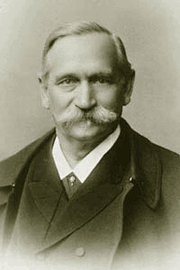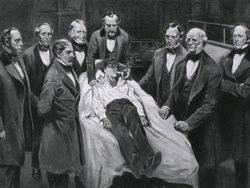UPDATED: The word [anesthesia] is formed by the prefix [an-] meaning "without" or absence of", and the Greek root term [-esthesia-] meaning "sensation". Skinner (1970) mentions that the suffix [-ia] means "condition". Thus analyzed, the word [anesthesia] means "a condition of absence of sensation". The word was coined and first used by Oliver W. Holmes Sr. (1809 - 1894).
The search for an anesthetic agent that could alleviate pain and help surgery has ancient origins, potions, alcohol, and herbal remedies had been used until the discovery of nitrous oxide (laughing gas) first, and ether second. It was this latter element, pioneered by William T.G. Morton (1819–1868), that started a revolution in surgery.
In 1846 Morton working as the anesthetist helped a public demonstration of surgery at the Massachusetts General Hospital. This was the first use of anesthesia in surgery. The event was so important that drawings and paintings were made. See the accompanying image.
After this demonstration, research was continued and the anesthetic properties of many compounds were discovered, leading to modern anesthetics.
The operation took place on October 16, 1846, in the first operating room built at the Massachusetts General Hospital. This room has been preserved and is today known as the "Ether Dome". You can read an article on a visit I made to this historic place. Dr. Miranda
Original image (public domain) courtesy of "Images from the History of Medicine" at www.nih.gov




